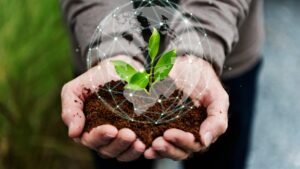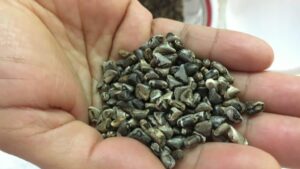With the signing of the Green Deal and Farm-to-Fork strategies, now it’s time to find out how businesses and organizations fit into the puzzle. That includes finding out how the Green Deal and climate-smart policies fit into the global agriculture puzzle as well.
Moving forward, the goal for Syngenta is the same goal farmers have: finding something that allows them to achieve.
“Farmers really want something that’s achievable,” Petra Laux, head of business sustainability for Syngenta Crop Protection, says. “Meaning the targets need to be realistic, and they need to have the right tools to achieve those targets. At the end of the day, they have a livelihood.”
In that aspect, there’s room for improvement.
“We believe that some of the targets being set are not aligned yet with what actually needs to be achieved — both in productivity and sustainability,” Laux says. “An area we see improvement on is actually on the biodiversity side.”
Specifically, seeing targets that are constructed focusing on protecting species to increase biodiversity both on and off farm is one regulation Laux is eager to see.
“This will then allow competition of all stakeholders to achieve these targets,” she says. “Such outcome goals can be much more effective than the currently proposed process targets, like the reduction of fertilizer or crop protection, which is more difficult for farmers, as there’s no alternative tools available right now. Innovation is still slow in the field, and they don’t know how to achieve their productivity targets while not having the tools to produce the crops the world needs.”
For Kent Nnadozie, the next step is finding out how access- and benefit-sharing (ABS) fit into the Green Deal.
“The ABS sectors are undergoing real transformation driven by technological evolution that are changing the ways that genetic resources are used,” Nnadozie, secretary of the FAO’s International Treaty on Plant Genetic Resources for Food and Agriculture, says. “Essentially, genetic resources are digitalized — they are used as data or with data, and benefit-sharing needs to reflect this in the future.”
While the Green Deal has focused on plenty of issues, Nnadozie would like to see the agriculture sector address issues related to equity — ensuring all countries and people have access to biodiversity.
“I’d like to see the International Treaty fit into the Green Deal by equitably addressing global environmental challenges through allocation of economic and social-cultural advantages arising from the use of plant genetic resources for food and agriculture,” he says, adding that this also needs to consider the needs for different stakeholders — including farmers, researchers and plant breeders.
Would a Global Green Deal be Feasible?
When it comes down to it, a global Green Deal would have its benefits, but could also have its problems.
The biggest hinderance? Different climate targets across the globe.
“It is super to have overarching global aims — we see this with the global climate targets and the UN’s Sustainable Development Goals,” says Laux. “We have one planet, and we need global targets — that’s clear.”
But, when it comes to specific policies, Laux believes there’s better ways to reach climate objectives.
“Agriculture has to be considered in the local context,” she says. “Climate is different. Soil is different. There are very different challenges that farmers face around the world. If there was a global Green Deal, it would need to look very different from place to place.”
For Nnadozie, multilateral approaches seem important, and having a global framework to bring it all together could help.
“While we have national boundaries, diversity, as well as a climate crisis, knows no boundaries. Therefore, international challenges need multilateral approaches to deal with them,” he says. “Having some form of a framework that facilitates international cooperation and collaboration is quite helpful in this respect.”
But, he agrees with Laux — agricultural systems are complex, making global policies difficult to navigate.
“The previous approaches, or even the approaches currently, have tended to be fragmented,” he says. “One cannot optimize the system by simply optimizing the complex elements individually or in isolation.”
Instead of attempting to fit one policy made for one specific area of the world a global endeavour, a systems approach that involves different sectors, geographies, players and levels of the society could be useful to combat climate change in the future.












